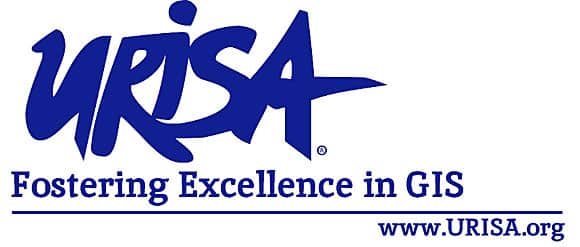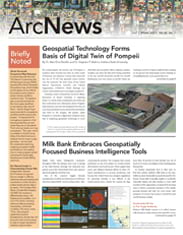The two key differences between being reactive and proactive are timing and control. When we’re reactive, we respond to something that’s already happened and that isn’t under control. When we’re proactive, we cause something to happen and control the situation. Of course, you can’t control everything—such as legislative requirements or other people’s behaviors—but you can control yourself and how you act.
When I took over as the department head for my local county GIS program in 2018, I jumped out of the frying pan into the fire. I spent the first six months dealing with problems, hoping things would calm down. Fast-forward a year, and it still felt like fighting fire was the norm.
In dealing with so many emergencies, I realized that the more fires you put out, the more burned out you become. I was stressed out, worn down, and tired of complaining about how the GIS team wasn’t involved in other departments’ projects. I felt like I couldn’t accomplish my goals for the GIS program. It was also my first supervisory role, and I didn’t have the experience or tools to communicate what my team and I needed—particularly because I didn’t understand internal processes, and other departments didn’t understand what GIS could do. To them, the GIS department just made maps. Does that sound familiar?

I realized that something had to change, or my team and I would break. So I took some steps to move from a place where fires and emergencies were the norm to where my team and I have established boundaries that protect us so we can grow as a department, and we now look forward to new projects. Here’s how you can do that, too:
Step 1: Write Down Your Goals
To be proactive during fires, you must plan for them to happen. Part of this planning process involves figuring out your goals and your team’s desired end results. Goals are important because they communicate intent while also giving you something to strive for. Any goal-setting method can work, from generating specific, measurable, achievable, relevant, and time-bound (SMART) goals and performing strengths, weaknesses, opportunities, and threats (SWOT) analyses to sitting down and writing out your objectives. Just do something to set your intentions.
Some of my goals were the following:
- Get involved in projects from the beginning, not just when someone needs a map.
- Fight fewer fires and come up with more firefighting plans; go from reactive to proactive!
- Expand GIS use across county departments.
- Get the resources that members of the GIS team need to do their jobs well.
- Support local municipalities.
I then figured out the barriers to achieving each goal. A lot of them were the same—namely, lack of awareness about GIS and/or its capabilities. From there, I brainstormed how to overcome those hurdles, which revolved around building awareness about GIS across departments and throughout the county. Once I figured all this out, I was able to turn my goals into the building blocks of a long-term, strategic plan.
Step 2: Determine Your Capabilities
When I first took over as the county’s GIS director, I had so many big questions:
- What does the GIS department need?
- How many requests can we handle?
- Where does our time go?
But I had a hard time coming up with answers. I knew I would need to ask for help. Yet if I did that, I would have to justify why I needed it, and I wasn’t sure how to do that.
I decided to establish a record of my department’s capabilities. This would help me understand my team’s ability to take on new projects, especially emergencies.
There are many tools available to distill this information, but we used a simple spreadsheet (which we still reference today). It listed all the GIS department’s assignments, who requested each project, the date the request was put in, the number of hours the project took to complete, a brief description of the project, and the GIS employee assigned to it.
Once we had a healthy inventory of assignments, we categorized the tasks, such as creating visuals, doing research on parcels, and providing data for emergency services. I also added a few categories for myself to see how much time I spent on database administration, on project management, and in meetings.
This spreadsheet informed many reports. It allowed me to answer various questions about what the GIS department spends time on and can do. It also helped me manage the team’s resources and estimate project budgets. In addition, the spreadsheet showed the sheer number of requests that the GIS department receives, plus the types of requests that come in and the amount of time the team spends answering those requests. This is all useful for me when discussing staffing needs and project capacity.
Step 3: Communicate
It is not in my nature to speak out, but I had to start communicating the GIS team’s intentions and needs. This can be a double-edged sword because the more you speak out, the more people are aware of you. In a positive light, this can get you included in conversations earlier. In a more neutral light, you may be given more responsibility or invite scrutiny. Always think about the consequences of your actions ahead of time and determine if they’re worth the risk. In my case, I decided to accept the risks and rewards in equal measure.
A lot of the challenges in my department stemmed from a lack of awareness about GIS, so I came up with a long-term communication strategy. It’s a two-way street. I communicate my team’s capabilities and successes with others throughout the county while also meeting regularly with employees in other departments to hear their stories and goals. Open communication like this is essential to preventing program stagnation and identifying new ways to improve.
Using the data I’ve gathered about my team’s capabilities and projects, I’m now distributing annual reports, project highlights, and newsletters. In 2022, my department sent out its first What Is GIS email to all county employees. It’s also useful to ask to be included in others’ communication efforts. Our public-facing GIS apps were featured in a virtual scavenger hunt hosted by the county. All this has resulted in people reaching out to learn more about what the GIS department does.
Step 4: Conclude That That’s Enough for Now
The first three steps of this process require effort and commitment. It takes a while to build and sustain good habits, so just start with these ideas and find the tools you need to begin turning a reactive program into a proactive one. Not everything I’ve done will work for everyone, but identifying goals, gathering data to support them, and communicating better are critical. For me, these steps have alleviated some of the worry that comes with managing projects, overseeing resources, and prioritizing tasks. Once you establish your department’s current capabilities, you can start putting together long-term plans and measuring your team’s return on investment (ROI).
Looking back on when I first became the county’s GIS director, I am beginning to see the fruits of my department’s efforts to be proactive rather than reactive. I know we can’t control and plan for everything. But putting the tools in place to collect data and identify our priorities and needs has helped mitigate some of the unpleasantness of surprise fires—and even get ahead of issues before they become fires. I don’t always know where or when a fire will start, but I’m not as worried now that I have a fire extinguisher at hand!



